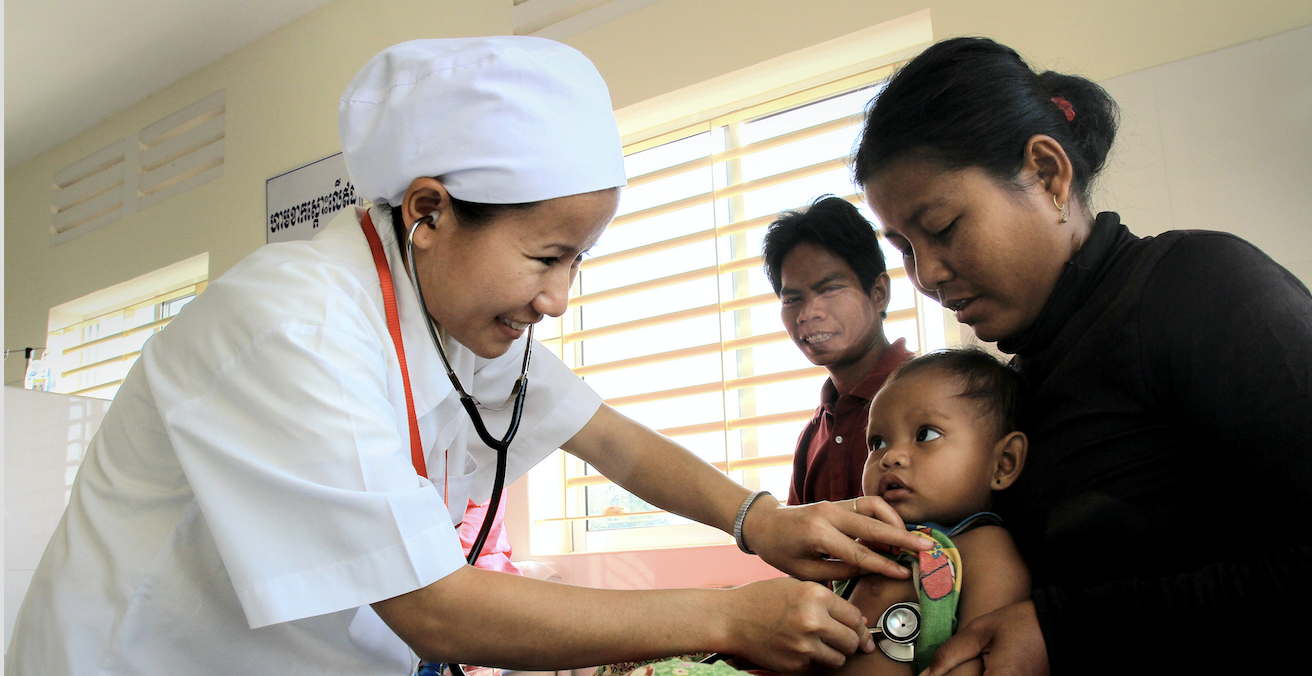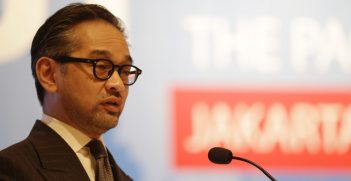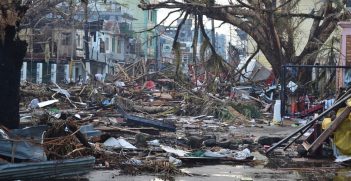Containing Contagion: The Politics of Disease Outbreaks in Southeast Asia

On World Health Day 2019, it is important to highlight the need for regional cooperation in containing infectious disease outbreak. The following is an extract from Sara E Davies’ new book Containing Contagion which she launched on 2 April with AIIA National.
Regional cooperation is important for securing infectious disease outbreak containment. The Ebola crisis in West Africa in 2014-2015 showed we are a long way from achieving strong international cooperation for disease outbreak response. Attention wanes when the “world” is not threatened. The present Ebola outbreak in the Democratic Republic of Congo has killed more than 1,000 people; but for now, the World Health Organization (WHO) maintains it does not require the type of international coordinated emergency response we saw in 2014-2015.
It is because of international coordinated engagement – and funding – in health security during “health peacetime” (the absence of an international outbreak emergency) that regional cooperation is vital. Regional cooperation can have its flaws – deeper familiarity with member states creates a reluctance to criticise your neighbors. However, on the flipside of these close relations are mutual interests, concerns and language. Southeast Asian states reporting behavior has changed over since the implementation of the revised International Health Regulations (IHR) in 2005. Effective regional cooperation comes from regular interaction and the normalisation of communication between local health care workers and mid-ranking Ministry of Health officials, as well as senior political leaders. Some states will attempt to conceal outbreaks but more regional cooperation, not less, will be the force that persuades these states to open up and report.
In my book, I make five key points about building regional political cooperation around infectious disease outbreak preparedness:
1. Regional cooperation to contain infectious disease outbreaks is possible and desirable
After the outbreak of the Severe Acute Respiratory Syndrome (SARS) in mainland China in 2003, and its spread to Singapore, Canada, Hong Kong, Vietnam and other states, the World Health Assembly (WHA) agreed to accelerate the adoption of a revised IHR instrument in 2005. The IHR was first adopted in 1951 to guide states on notification and quarantine measures in the event of an outbreak of a disease that was listed as a notifiable disease. Revising the IHR had been tabled since 1995 but had lacked diplomatic momentum until SARS. This outbreak, followed by animal-to-human transmission of Avian Influenza H5N1 in the Southeast Asian region between 2003 and 2004, helped speed up the sense of urgency and the IHR’s relatively smooth passage to adoption by the WHA in 2005.
The revised IHR was different in three substantial ways. First, a definition and a matrix were established for states to determine if their outbreak event, whether biological, environmental, chemical, radioactive or natural, would require notification to the Director-General of the WHO as a potential “public health emergency of international concern” (PHEIC). The second change was the duties placed on states to meet the surveillance, reporting, and verification expectations laid out in the revised IHR. Finally, the third change was the expectation states would refrain from taking punitive measures into their own hands. Specifically, there would be no restrictive trade or travel measures imposed against a state experiencing a PHEIC, unless recommended by the WHO. This was vital to end the practice of states failing to report events and to promote states reporting outbreaks early and often.
Also, in 2005, two of six regional offices in the WHO’s decentralised structure adopted an implementation instrument to assist them with the revised IHR. The Asia Pacific Strategy for Emerging Infectious Diseases (APSED) was adopted by the WHO regional offices for the Western Pacific (WPRO) and Southeast Asia (SEARO). This program outlined a five-year pilot timeframe (2005-2010) to assist member states to meet the core capacity requirements of the revised IHR. For a region with a tradition of reluctance to embrace international legal frameworks, it is important to understand what was special about APSED.
2. APSED: a positive example of states cooperating with the WHO during disease outbreaks
I argue that APSED played a pivotal role by providing an inclusive network, especially for member states of the Association of South East Asia Nations (ASEAN). Some ASEAN member states were in WPRO and some in SEARO. APSED provided a layer of cooperation for this collective membership, some of whom were struggling with notifiable disease outbreak events at the time, to come to grip with the capacities required under the revised IHR. APSED was, and remains, a unique regional model that assisted the region and possibly the wider international community in three ways. First, it established an inclusive regional structure based on the cherished regional principles of noninterference and quiet diplomacy. Second, it acknowledged that behavioral change came not only from attending high-level events, but from an epistemic community of experts and bureaucrats from the region who needed to be linked together in dense learning networks. Third, APSED defined the common regional threat from failing to cooperate in response to disease outbreak events and created a shared regional purpose.
3. The Asian region, particularly Southeast Asia, has a tradition of seriously engaging with the concept “health security” and it was an opportunity for cooperation
Three areas where the two regions particularly standout in their IHR performance is in coordination, surveillance and response. The progress in these shared areas comes back to the shared narrative developed at the time of APSED’s first phase. The “regional health security” phase was deliberately deployed to trigger collective buy-in and emphasise the need for a collective approach. Coordination, surveillance and response were recognised as core capacity areas where cooperation could be advanced amongst all members of SEARO and WPRO. This effort to identify areas where there was sufficient state “buy-in,” irrespective of capacity, system or income, was vital. APSED was a difficult coordination exercise (more than 40 states across two WHO regional offices). It confronted numerous challenges but the call for collective action was assisted by coupling obligation with consistent reference to “regional health security.” ASEAN also added an extra layer of institutional commitment. This was a unique arrangement for health diplomacy and the WHO. It created a crucial opportunity to progress cooperation through an existing political space that was familiar to SEARO and WPRO members.
4. Reporting and communicating infectious disease outbreak events require states to trust their citizens and their neighbours
How to measure progress and commitment was a problem, given diverse membership and capacity. Indeed, this increasingly became a problem for APSED donors and some members by its second phase (2010-2015). However, I detail how, between 1996 and 2010, there was a significant upsurge in the number of states in Southeast Asian that reported disease outbreaks. Most ASEAN states, including those with poor surveillance and response capacity (that is, Cambodia and Laos) and those politically resistant to open reporting (that is, Myanmar), attempted to increase state-led detection and reporting of outbreak events. This resulted in differences in disease reporting type, reporting timeframes and reporting volume amongst the 10 states. However, the overall trend was clear and consistent: states were reporting more outbreak events more often over this period of time. Reporting included not only the IHR notifiable diseases but also diseases that were priorities in the region, such as dengue. This success speaks to the importance of linking IHR core capacity improvements to existing health burdens in the states and region.
Crucial to understanding why the region achieved this level of coordination is the uniquely political way in which Southeast Asia approached the problem: the strength of the system was embedded in local capacity, local needs and local politics. Existing regional institutions, namely ASEAN, were encouraged to participate and cohere around states. Regional ownership of IHR revision was vital in Southeast Asia: it created a regional infrastructure that respected noninterference and quiet diplomacy, and an epistemic community of experts. Finally, there was a deliberate framing of infectious disease outbreaks as a common threat – shared by all states irrespective of capacity – and that created a shared purpose and responsibility to participate.
5. When states fail to report infectious disease outbreaks it is not only due to health capacity shortfalls
Finally, my book details the political obstacles that remain when it comes to prompt and transparent reporting. It is important to pay attention to how regions adapt to international legal instruments.
In interviews in the region, most ministries discussed their deliberate strategy to beat the panic the media could generate by reporting unconfirmed rumors first; and states increasingly sought to report first to communicate competence to neighboring states and the region.
I also heard of instances where a small number of states exerted control over their media, and it is necessary to be cautious state reports are accurate and transparent. Technical cooperation in areas such as infectious disease surveillance and response are also regional acts of diplomacy. In these technical spaces, we must also be attentive to the civil and political rights space in which health care workers, non-government workers and the media work. Freedom to report, freedom to share information without fear of reprisal and freedom to seek health care without fear, also affect our collective capacity to conduct disease outbreak surveillance and reporting. I argue in my book that human rights are a neglected core capacity of the IHR that needs to be discussed more.
Sara E Davies is an associate professor and Australian Research Council future fellow in the School of Government and International Relations, Griffith University, Australia.
This article is an extract by Sara E Davies from her new book, Containing Contagion: The Politics of Disease Outbreaks in Southeast Asia (Baltimore, Maryland: John Hopkins University Press, 2019).





